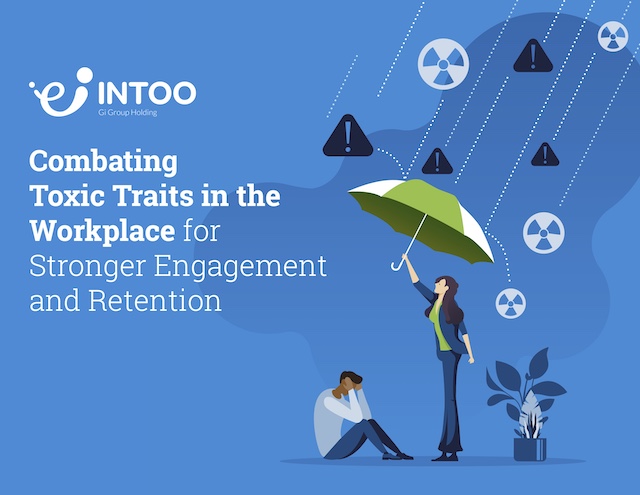Are you trying to figure out the distinctions between part-time and full-time employees? It goes beyond mere work hours—finding the right balance is the key to a thriving and cohesive workforce.
The Affordable Care Act (ACA) classifies part-time employees as those who work fewer than 30 hours a week and full-time employees as those who clock in 35 to 40 hours weekly. But that’s only where the differences begin. Part-time positions offer unparalleled flexibility, appealing to individuals seeking that elusive work-life balance. Fewer hours enable employees to excel at work while managing personal commitments.
On the flip side, full-time roles provide stability, featuring standard workweeks and enticing benefits. This fosters a committed and dedicated workforce, powering your organization’s success.As an employer, understanding the nuances between these two employee types is paramount. Tailoring compensation strategies is vital, offering prorated wages for part-time staff while providing full-time employees with fixed incomes, health insurance, and retirement plans.
Moreover, recognizing and rewarding employees appropriately is essential for motivation. Full-time staff often relish performance-based bonuses and annual appraisals, while part-time employees highly value flexible scheduling and additional incentives.
Now that we defined the differences between part-time vs. full-time employment, let’s explore the pros and cons of each type of employee for both employers and employees.
Pros & Cons of Hiring Part-Time Workers: For Employers
Pros:
- Cost Savings: Hiring part-time employees can be cost-effective for businesses, as they typically receive fewer benefits and lower wages than full-time staff. This is particularly advantageous for companies with budget constraints.
- Flexibility: Part-time workers provide employers with scheduling flexibility. They can be utilized to cover peak periods, seasonal demands, or specific project requirements without the long-term commitment of a full-time position.
- Diverse Skill Sets: Part-time employees may bring specialized skills and experiences that complement and increase the diversity of the existing workforce. This can enhance problem-solving capabilities and creativity within the team.
- Reduced Overtime Expenses: By employing part-time workers to handle increased workloads, employers can reduce overtime expenses for full-time employees, resulting in potential cost savings.
Cons:
- Limited Commitment: Part-time employees may have less loyalty and investment in the company compared to full-time staff. This could lead to higher turnover rates and a potential lack of alignment with the organization’s long-term goals.
- Training and Onboarding: Frequent turnover among part-time employees may increase the need for continuous training and onboarding, which can consume valuable time and resources.
- Communication Challenges: With part-time staff working fewer hours, maintaining effective communication and collaboration within the team can become more challenging.
- Coverage Gaps: Depending heavily on part-time employees might create coverage gaps, especially if employees leave abruptly or if there is difficulty finding replacements for specific shifts.
 Pros & Cons of Working Part-Time: For Employees
Pros & Cons of Working Part-Time: For Employees
Pros:
- Flexibility: Part-time work offers a unique advantage—the freedom to achieve a work-life balance by managing personal commitments more effectively.
- Suitability: Part-time roles are tailor-made for specific life circumstances. It gives employees a dynamic lifestyle, ensuring they can handle their priorities while still earning an income.
- Skills Alignment: Part-time jobs often offer fulfilling work that aligns with employees’ interests and talents. Whether professionals have a creative flair waiting to be unleashed, or they possess analytical prowess itching to be utilized, part-time opportunities might be the perfect avenue for an individual to express and develop their skills.
- Benefits: While not all part-time positions may provide a comprehensive benefits package, some employers recognize the value of a motivated and engaged workforce. As a result, they offer attractive perks and incentives to part-time employees, such as access to company events and training programs, and even opportunities for career advancement within the organization.
Cons:
- Lower Earnings: Part-time work typically comes with reduced pay compared to full-time positions. Hence, the need for prudent financial planning.
- Limited Benefits: Health is a precious asset, and part-time employees might have limited access to benefits like healthcare coverage.
- Career Growth: If rapid career advancement is a top priority for an individual, reduced hours in part-time roles might limit their opportunities for promotions or upward mobility within the company.
- Irregular Schedules: The dynamic nature of part-time work can lead to irregular and changing schedules. While this can be exciting for some, it may also require adaptability to plan personal activities and maintain a consistent routine.
Pros & Cons of Hiring Full-Time Workers: For Employers
Pros:
- Greater commitment: Full-time employees tend to develop a stronger sense of belonging to the company and are more likely to invest in its long-term success.
- Higher job satisfaction: Full-time employees often have a deeper connection to their roles, leading to increased job satisfaction.
- Increased productivity: With dedicated and consistent work hours, full-time employees can focus on tasks without disruptions or frequent onboarding processes. This continuity allows for better project management and improved productivity.
- Comprehensive training and career development: Employers can invest in the professional growth of full-time staff by offering various ways to assist in their employees’ career development. This fosters a skilled and capable workforce, promoting internal promotions and reducing the need for external hiring.
Cons:
- Higher labor costs: Employing full-time workers results in higher expenses, such as providing benefits like healthcare, paid time off, and contributions to retirement plans. Additionally, employers must pay taxes on wages and benefits offered.
- Inflexibility in adjusting staff levels: During economic downturns, employers may find it challenging to adjust full-time staff levels without resorting to layoffs, potentially leading to overstaffing during lean times.
- Legal complexities: Dismissing full-time employees can be more complicated legally, and it may require providing severance packages or adhering to specific notice periods, which can add financial strain to the company.
 Pros & Cons of Working Full-Time: For Employees
Pros & Cons of Working Full-Time: For Employees
Pros:
- Job Security: Full-time employees often enjoy greater job security, as they have a more stable position within the company and are less susceptible to sudden layoffs or job loss.
- Comprehensive Benefits: Full-time staff typically receive more extensive benefits, such as health insurance, 401Ks, vacation and other paid time off, and other perks, which contribute to their overall well-being and job satisfaction.
- Career Advancement: Full-time employees have better opportunities for career growth and advancement within the company, as they can invest more time in developing their skills and expertise.
- Consistent Income: With a fixed schedule and regular hours, full-time employees can rely on a consistent income, providing financial stability and peace of mind.
Cons:
- Work-Life Balance: Full-time positions may demand more hours, potentially affecting work-life balance and limiting time for personal pursuits and family commitments.
- Job Stress: The expectation of consistent productivity and performance can lead to increased job stress and pressure on full-time employees.
- Limited Flexibility: Full-time workers may have less flexibility in setting their schedules compared to part-time or freelance arrangements, making it challenging to accommodate personal needs or emergencies.
- Overtime Demands: Some full-time roles might require overtime work, leading to extended hours and potential burnout.
Part-Time vs. Full-Time – Federal Laws
In the realm of workforce management, two federal laws stand tall: the Affordable Care Act (ACA), also known as Obamacare, and the Fair Labor Standards Act (FLSA). These regulations hold immense significance in defining the employment status and benefits for both full-time and part-time workers. As an employer, comprehending these laws is paramount when making decisions about your workforce.
Let’s begin with the ACA: Employers boasting over 50 full-time or full-time equivalent employees (FTE) are deemed Applicable Large Employers (ALEs). ALEs must provide health insurance to their full-time staff, with penalties looming for non-compliance. On the other hand, smaller establishments, having 50 or fewer full-time employees, including equivalent ones, fall under the classification of small employers. Such entities may explore coverage options through the Small Business Health Options Program.
Now, turning our focus to the FLSA: Full-time employees enjoy the privilege of receiving overtime pay at 1.5 times their regular rate for any hours beyond the 40-hour workweek, save for specific exemptions. Moreover, full-time staff may be eligible for salary-based compensation and benefits, tailored to their job classification and employer policies.
As an employer, embracing a clear understanding of these laws empowers you to make well-informed decisions, ensuring compliance and nurturing a positive work environment for your valued employees.
Next Steps & What to Keep in Mind
Understanding the distinctions between part-time and full-time employment is vital for building a thriving and cohesive workforce. Part-time positions offer unparalleled flexibility, appealing to those seeking work-life balance, while full-time roles provide stability and enticing benefits, fostering a committed and dedicated workforce.
As employers, tailoring compensation strategies and recognizing and rewarding employees appropriately are crucial steps in increasing loyalty and productivity among full-time staff. Offering personalized coaching and career development solutions can empower employees during workforce transitions, ensuring a positive impact on both personal and professional levels. In every stage of the employee lifecycle, INTOO helps employers protect their brand through effective candidate experience, career development, and outplacement services. Contact us to learn how we can make a difference for you and your employees.


 Pros & Cons of Working Part-Time: For Employees
Pros & Cons of Working Part-Time: For Employees Pros & Cons of Working Full-Time: For Employees
Pros & Cons of Working Full-Time: For Employees








